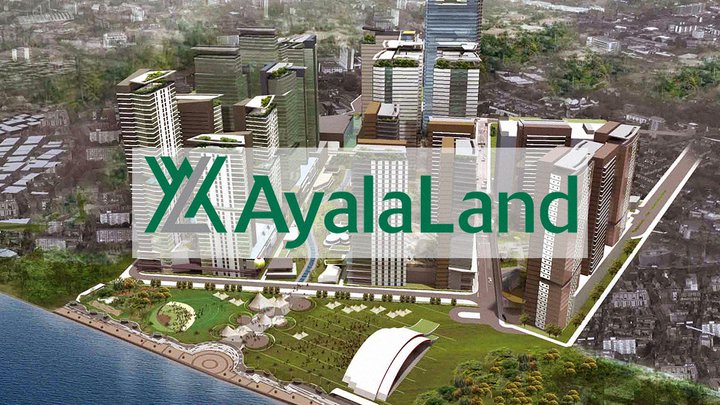Financial Adviser: 5 Reasons Why Ayala Land Is Still a Solid Blue-Chip
Financial Adviser: 5 Reasons Why Ayala Land Is Still a Solid Blue-Chip Investment and How to Profit from It
Market history tells us that when inflation and interest rates go up, property stocks tend to fall in 63 percent of the time.
The rise in inflation this year from 3.0 percent at the start of the year to 6.1 percent last June has caused interest rates to go up, driving the 10-year bond yield to accelerate from 4.8 percent in January to as high as 7.0 percent recently.
Rising inflation and interest rates could lower demand for properties because higher prices can slow consumer spending that may result to lower income, while higher interest rates make home loan financing more expensive.
Uncertainties over continued rise in inflation and interest rates have caused the Property Index to fall by 23.6 percent so far this year, doing far worse than the Philippine Stock Exchange (PSE) Index’s loss of 12 percent.
One of the biggest losers in this meltdown is Ayala Land (PSE: ALI), which has lost by 32.1 percent to date, falling from P36.70 per share at the start of the year to as low as P22.55 per share last week.
ALI, being one of the largest foreign-owned stocks in the market, has suffered heavy foreign selling these past few weeks on concerns of its weak earnings outlook this year.
Foreign ownership of ALI has declined significantly from 39 percent in 2019 to only 30 percent this year. With rising risks of a global recession and weaker peso, ALI could face another round of foreign selling as the stock market falls to historical lows in the coming weeks.
But how bad is the earnings outlook of ALI? How low will its stock price go? What are the prospects of a recovery in the stock?
Contrarians love to say that investing during bad times can be potentially rewarding because it offers investors the chance to buy stocks at substantial discounts to its intrinsic values.
ALI’s current situation could offer a once-in-a-lifetime value investing opportunity, as fears of further selling in the stock can result to possible mispricing.
Legendary investor Warren Buffett once said, “Be fearful when others are greedy, and greedy when others are fearful.”
Here are the five things every investor needs to know about Ayala Land and how we can profit from it:
1| Earnings on way to recovery growth
ALI’s net income has been growing by an average of 21 percent per year from P7.1 billion in 2011 to a high of P33.2 billion in 2019 prior to the pandemic, on the back of strong revenue growth, which steadily increased by 17 percent annually.
But during 2020 pandemic, ALI’s net income plunged 73.7 percent, falling close to its 2011 net income at P8.7 billion for the first time in eight years. Since then, ALI’s net income has not yet recovered to its pre-pandemic level.
Although ALI was able to increase its net income last year by 40 percent year-on-year to P12.2 billion, as its total revenues increased by eight percent to P103.8 billion, its net income represents only 36.7 percent of its 2019 earnings.
This year, ALI’s total net income continues to recover, albeit at a slower pace, growing by 14 percent to P3.2 billion from P2.8 billion in the same period last year.
If we use the historical contribution of ALI’s first quarter to its full year net income at 22 percent, we can estimate that ALI’s net income by year end will amount to about P14.5 billion, which represents 18.9 percent growth from last year.
But if we use the average net income projections of top foreign brokers in the market, we can see that institutional investors expect ALI to end the year stronger at P17.7 billion, which represents 45 percent earnings growth.
The same market consensus also projects ALI’s net income to grow by 41 percent to P25 billion by 2023 and 18 percent to P29.5 billion by 2024.
The recent fall in the stock price of ALI at P22.55 per share has brought the company’s market valuation back to the 2011 era when the company’s net income was in the P7 billion level.
But this year’s expected net income is no way near the P7 billion. At projected earnings of P17.7 billion this year, ALI certainly deserves a higher market valuation.
Perhaps for reference, the last time that ALI’s net income reached P17 billion level was in 2015, and during that time, ALI’s stock price has averaged at P34.45 per share.
2| Strong balance sheet lowers financial risks
One of the qualities of a well-managed company is its ability to invest for growth at lowest risk possible.
ALI recently launched a pipeline of new projects worth P100 billion this year, where 93 percent of that amount will be located in the Luzon region.
ALI has also budgeted capital expenditures of P90 billion mainly for residential development and land acquisition, which will be funded by a combination of internally generated cash flows and borrowings.
ALI has maintained a healthy financial position through the years with adequate liquidity ratios.
Based on its first quarter balance sheet this year, ALI’s current ratio stands at 1.50, which indicates that the company has the ability to generate enough cash to pay off all its short-term obligations at any time.
On the other hand, ALI’s debt-to-equity ratio, which measures the financial risk of the company, has also been stable at 0.84. This means that the company has borrowed only P0.84 for every one peso of equity.
The lower debt-to-equity ratio of ALI implies that the company is more financially stable compared to the property sector, which has an average debt-to-equity ratio of 1.4 times.
A high debt-to-equity may be considered risky to creditors and investors, especially in this time of high interest rates.
ALI has also managed to lower its debt exposure to interest rate volatility by keeping 99 percent of its total borrowings under long-term debt, with a locked-in average fixed interest rate of 4.2 percent and average maturity period of 6.1 years.
The lower financial risks of ALI amid an industry slowdown brought about by rising interest rates should translate to higher premium for the stock.
3| Trading at substantial discount to Net Asset Value
ALI is primed for strategic post-pandemic reset with its 12,498 hectare-landbank, which can sustain the company’s growth in the next 25 years.
ALI continues to seek new opportunities to expand its land inventory for large-scale, master-planned developments with a focus on acquiring key sites in Metro Manila area and other progressive regions that offer attractive potential for capital appreciation.
If we will get the market value of ALI’s current land bank on top of its other assets minus its total liabilities, we can derive the company’s Net Asset Value or NAV.
The NAV per share of a company can serve as a very important reference for investors to understand because asset prices are what will drive the future returns of a property company.
Based on a survey of nine institutional brokers in the market, the median NAV per share of ALI is about P64.3 per share, while the median discount to target price is 30 percent.
Given this market consensus, we can simply multiply the median NAV of P64.3 per share by 70 percent net of discount to derive a target price of P45 per share.
At the current price of ALI at P24 per share, the stock offers an attractive 47 percent discount to its NAV target price of P45 per share.
4| Valuation at attractive earnings multiple
If we compare the trailing 12-month earnings of ALI against its current market capitalization, we will derive a Price-to-Earnings (PE) ratio for the stock at 28 times.
This PE ratio makes the stock look expensive despite its recent huge correction if we compare this to the market’s PE of only 13 times.
Moreover, ALI’s current trailing PE ratio also compares well with its pre-pandemic 10-year historical PE average at 29 times, which could limit any short-term recovery in the stock.
However, if we focus on the projected net income of ALI at P17.7 billion, given its modest recovery this year, we will derive a more reasonable prospective PE ratio target of 19.9 times.
Given this expected recovery, the current share price of P24 at prospective PE of 19.9 times offers a long-term potential upside of 45.7 percent to its historical PE of 29 times.
If we follow market consensus that ALI’s net income by 2024 will recover to P29.5 billion, we can estimate that the projected annual earnings growth in the next three years from 2021 will be 34 percent per annum.
To put this in right perspective, we can factor the expected earnings growth in the pricing multiple by using the Price-to-Earnings to Growth or PEG ratio.
According to legendary investor Peter Lynch, a stock is considered fairly valued if its PE ratio is equal to its growth ratio, meaning its PEG ratio is equal to 1.0, but when a PEG ratio falls below 1.0, the stock is deemed undervalued.
Given ALI’s expected growth rate of 34 percent in the next three years, the stock’s current PEG ratio is only 0.82.
To value ALI at PEG ratio of 1.0, based on its trailing PE of 28 times, will mean the stock must be priced at P29 per share in the short-term, but prospectively, based on target PE of 19.9 times, the stock can have long-term value of P41 per share.
5| Brand value and growth premium remain intact
Despite the massive sell-off in the stock as a result of de-rating by some analysts, ALI still enjoys strong brand value and market premium.
If we compare ALI’s Price-to-Sales ratio at 3.77 against property sector’s average Price-to-Sales ratio of 2.35, we will derive a difference of 1.42 that can be attributed to ALI’s brand value.
2 Likes5 Replies
Continuation:
To quantify this brand value, we can simply multiply this 1.42 against ALI’s trailing 12-month revenues of P97.6 billion to derive a value of P138.5 billion.
This amount of P138.5 billion brand value represents about 38 percent of ALI’s market capitalization.
Now, the other way to look at it is by computing market perception of ALI’s premium. Investors pay premium for a stock when they expect the company to deliver steady earnings growth in the future.
If we assume that ALI will have no growth in earnings in the future, we can simply divide its trailing 12-month earnings per share by its discount rate to derive the intrinsic value of its assets at P7.90 per share.
Comparing this to the stock’s current price of P24 per share, we can derive that the excess of P16.1 per share is the amount of premium that the market pays for the stock’s future growth.
This premium represents 68 percent of ALI’s stock price, one of the largest in the property sector, which currently has a negative premium or discount of 82.8 percent.
Being an industry leader with a dominant brand, ALI should be able to enjoy some degree of pricing power. The company should be able to adjust their prices and terms very quickly to adopt in the current down cycle to recovery in the future.
With inflation and interest rates still rising, there is no doubt that the stock market will continue to weaken and so will the stock price of ALI in the coming weeks.
Current weakness in the stock should give great opportunity to accumulate for the long-term.
Thanks
Wow
Thanks
Thanks

















